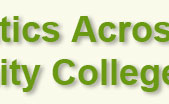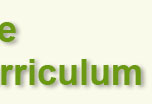|
MAC^3 and Biology
The Carbon Dioxide Challenge - How Many Plants Make a Future?
The story of Biosphere 2 is introduced to the students in the context of a discussion of the carbon cycle, climate change, and CO2 accumulation in the atmosphere. The lab activity focuses on the role of photosynthesis in a sustainable future. Students explore the effect of photosynthesis and respiration in one liter ‘closed systems’ containing plankton, marine plants, and fish. By calculating carbon dioxide uptake and production in these systems, students predict a plant: animal ratio sufficient to maintain a system in carbon dioxide ‘balance’ for one hour. Building and testing the system, then extending it to a longer time period, demonstrates to the students that carbon dioxide accumulation, even in a simple system for a short time period, is not a trivial matter. Students apply concepts from biology, solution chemistry, and exercise considerable quantitative reasoning from real data as they design and fine-tune their systems.
Ocean Acidification and the Effect on Sea Shells - Sally Salivates Seashells by the Seashore
A teaching-and-learning activity reviewing acids and bases and looking at the impact of acid on shells. Climate change is an important and complex topic. Multiple consequences including warmer weather are still being evaluated. One recent impact is increased acidification of the ocean and its impact on marine life. In this lesson we review “Acids and Bases” taught in a previous lesson and, through a scientific method, will look at the impact of an acid on different types of shells.
This is an activity for teachers working with students in 6-8th grades in the subject(s) of oceanography & marine biology.
Sound Science
The curriculum and activities we are planning for a math/biology linked learning community will give students the opportunity to make a connection to real activities outside the classroom. In our shared activities, “Sound Science,” students will engage in meaningful "active learning" during "lecture" time as opposed to the passive learning of listening to a lecture and taking notes.
Learn-and-serve Environmental Anthropology Field (LEAF) School
The LEAF School combines academic instruction employing service-learning with an AmeriCorps program so that students earn college credit and a scholarship of $1,000 – 2,362 while working with tribes, businesses, governments and non-profits to make fishing, farming and forestry more sustainable. Students can earn 15 credits over the summer or enroll for just 5 credits in Human Ecology in spring and fall. Field projects with quantitative elements include surveys of salmon and shellfish populations, growth patterns and habitats; monitoring of vegetation growth and vitality in restoration projects; assessments of stream profiles before and after installation of large woody debris; and surveys of human recreation on an uninhabited island with a nature preserve.
Biology & Sociology of Human Disease
Our proposed project involves the enhancement of an existing non-math course, which is a learning community (a coordinated studies course) that includes Sociology 110 (Introduction to Sociology) and Biology 150 (Biology of Human Disease). The exercises that we develop in this project will also be used in stand-alone (non-coordinated studies) classes, including Biology 150, Sociology 110, Sociology 200, and in a course on medical sociology that will be developed next year. We used the time at the summer institute to develop quantitative epidemiological exercises mostly with our coordinated studies course in mind. The prerequisite for this course is placement into intermediate algebra.
Math for Elementary Teachers II : Inquiry into Life Science
This four-class learning community will provide an integrated curriculum experience for the final semester of elementary education majors focusing on integrating math into the science and education curricula.
Integrating Science and Math for Elementary Education Majors
The faculty developed modules for implementing into the Science and Math Courses for Elementary Education Majors. The modules included topics including ratios of surface area and volume, the Normal distribution, data analysis, and probability.
Integrating Mathematical and Biological Concepts
Modular curriculum guides were developed that integrate mathematical and biological concepts. These guides can be used in mathematics courses to illustrate biological applications or in biology courses to reinforce mathematics as a tool used in scientific analysis and to explain biological phenomena. Each modular unit incorporates background information from both a mathematical and biological perspective and engages students with various assignments.
General Education Biology with College Algebra
This learning community integrates biology and algebra through joint group projects, joint case studies, and class examples and exercises. Through the integrated approach, the project aims have students understand the field of Biology quantitatively, be able to apply mathematics in an authentic context, and overcome math anxiety. The course also includes a service learning component with a minimum of 20 hours per student to complete the project.
Math Across the Curriculum in Biology Labs:
Our primary goal is to incorporate teaching modules into the Biology labs to enhance mathematical understanding through hands-on experience. We also hope to develop a working relationship between the math and science faculty in order to determine which skills should be emphasized in the math courses with relevant biological examples.
Quantitative Problem Solving in Biology:
Two biology instructors worked on revising assignments to more explicitly help students progress up the developmental staircase to solve quantitative problems in molecular and cellular biology. Taking their inspiration from the TV show "What Not To Wear" they titled their project "How Not to Teach," and they discuss how to better teach specific quantitative topics in Biology.
"Biology with Math-Aid":
A mini-coordinated studies class that includes mathematical concepts that will be used in the biology series. Topics will include graphing, scientific notation, logarithms, exponential functions, and probability.
"On Being Human" Anthropology & Biology of Human Origins:
A coordinated studies course quantifying and incorporating biology and genetics into anthropology.
Biology - Graphing
Modules to implement in a Biology course with explicit emphasis on graphing techniques, graphical ethics, and computer graphing software.
Integrating Mathematics and Life Science at North Iowa Area Community College
Creating a learning community for Pre-service Elementary teachers.
|









